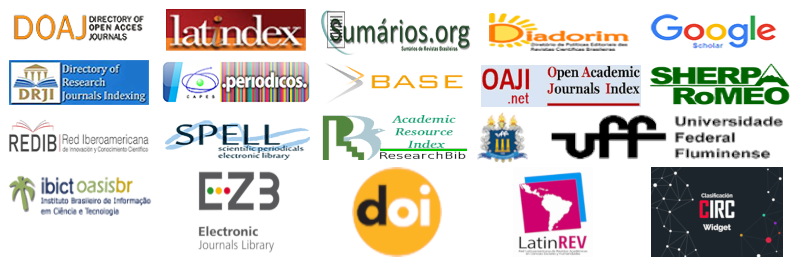Vamos Expandir um Negócio Inovador?
DOI:
https://doi.org/10.20401/rasi.5.1.254Keywords:
Empreendedorismo, Inovação, Estratégia, Caso de EnsinoAbstract
Este caso de ensino foi descrito com base em fatos reais e relata a situação de mercado vivenciada na empresa Purificatta. A empresa fica situada na cidade de Marau, interior do Rio Grande do Sul, sendo uma fabricante de purificadores de água, bem como administra o serviço de fornecimento e franquia de água purificada a granel. Trata-se de uma empresa jovem, com grande potencial de crescimento e competitividade. Inicialmente houve um grande investimento do idealizador (Ricardo) e seu empreendedor inicial (Leonardo), em desenvolvimento e pesquisa para chegarem na definição de fabricar, ao invés de importar as máquinas purificadoras. O caso se desdobra a partir da decisão dos sócios em expandir os serviços para uma maior abrangência no mercado nacional e do surgimento de possíveis concorrentes. O objetivo desse caso de ensino é propor reflexões sobre a tomada de decisão e ações associadas ao empreendedorismo e inovação no cenário globalizado e cada vez mais competitivo. Este caso pode ser utilizado como ferramenta auxiliar de ensino, principalmente em disciplinas relacionadas a estratégia, na graduação e pós-graduação lato sensu do curso de administração.
Downloads
References
Ansoff, I., & Mcdonnel, E. J. (1993). Implantando a administração estratégica. São Paulo: Atlas.
Bardin, L. (2010). Análise de conteúdo. 3 ed. Lisboa: Edições 70.
Brasil. Decreto de Lei Nº 7.841, de 08/08/1945. (2016). Retrieved from www.planalto.gov.br/ccivil_03/decreto-lei/1937-1946/Del7841 Acessed in 11 Jul. 2016.
Chesbrough, H. W. (2003). Open innovation: the new imperative for creating and profiting from technology. Boston, Massachusetts: Harvard Business School Press.
Damanpour, F. (1991). Organizational innovation: a meta-analysis of effects of determinants and moderators. Academy of Management Journal, 34(3), 555–590.
De Guimarães, J. C. F., Severo, E. A., Dorion, E. C. H., Coallier, F., & Olea, P. M. (2016). The use of organizational resources for product innovation and organizational performance: A survey of the brazilian furniture industry. International Journal of Production Economics, 180, 135–147.
Demeester, L., De Meye, A., & Grahovac, J. (2014). The role of operations executives in strategy making. Journal of Operations Management, 32(7–8), 403–413.
Dornelas, J. C. A. (2001). Empreendedorismo: transformando ideias em negócios. São Paulo: Campus.
Dornelas, J. C. A. (2003). Empreendedorismo corporativo: como ser empreendedor, inovar e se diferenciar em organizações já estabelecidas. Rio de Janeiro: Elsevier.
Drucker, P. F. (2015). Innovation and entrepreneurship. New York: Routledge.
Glaser, L., Fourné, S. P., & Elfring, T. (2015). Achieving strategic renewal: The multi-level influences of top and middle managers’ boundary-spanning. Small Business Economics, 45(2), 305–327.
Hung, H., & Mondejar, R. (2005). Corporate directors and entrepreneurial innovation: an empirical study. Journal of entrepreneurship, 14(2), 117–129.
Jarzabkowski, P., Kaplan, S., Seidl, D., & Whittington, R. (2016). On the risk of studying practices in isolation: Linking what, who, and how in strategy research. Strategic Organization, 14(3), 248–259.
Kaplan, R. S., & Norton, D. P. (1997). A estratégia em ação: balanced scorecard. São Paulo: Campus.
Koryak, O., Mole, K. F., Lockett, A., Hayton, J. C., Ucbasaran, D., & Hodgkinson,
G. P. (2015). Entrepreneurial leadership, capabilities and firm growth. International Small Business Journal, 33(1), 89–105.
Kotler, P. (1997). Administração de marketing: análise, planejamento, implementação e controle. São Paulo: Atlas.
Kuratko, D. F., Hornsby, J. S., & Hayton, J. (2015). Corporate entrepreneurship: The innovative challenge for a new global economic reality. Small Business Economics, 45(2), 245–253.
Li, Y., Su, Z. & Liu, Y. (2010). Can strategic flexibility help firms profit from product innovation? Technovation, 30(5–6), 300–309.
Manual de Oslo. (2005). The measurement of scientific and technological activities. OECD.
Meirelles, A. M., & Gonçalves, C. A. (2005). Uma abordagem multiparadigmática para a disciplina estratégia. Anais do II Encontro de Estudos em Estratégias (3Es). Rio de Janeiro-RJ. Anais...
Metcalfe, J. S. (2004). The entrepreneur and the style of modern economics. Journal of Evolutionary Economics, 14(2), 157–175.
Mintzberg, H., & Quinn, J. B. (1998). O Processo da estratégia. São Paulo: Bookman.
Porter, M. E. (2005). Estratégia competitiva: técnicas para análise de indústrias e da concorrência. 2 ed. São Paulo: Campus.
Rozsa Neto, R. & Lavarda, R. A. B. (2017). The language studies in strategy as practice and the middle manager roles: An essay. REBRAE, 10(3), 366–380.
Schumpeter, J. A. (1982). Teoria do desenvolvimento econômico. São Paulo: Abril Cultural.
Serasa. Centralização de Serviços dos Bancos. (2016). Retrieved from http://www.serasaconsumidor.com.br/category/nascimento-de-empresas Acessed in 29 Ago. 2016.
Timmons, J. A., & Spinelli, S. (2007). New venture creation: entrepreneurship for the 21st century. New York: McGraw-Hill Irwin.
Vale, G. M. V. (2007). Territórios vitoriosos: o papel das redes organizacionais. Rio de Janeiro: Garamond.
Yariv, I., & Galit, K. (2017). Can incivility inhibit intrapreneurship? The Journal of Entrepreneurship, 26(1) 27–50.
Whittington, R. (2003). The work of strategizing and organizing: for a practice perspective. Strategic Organization, 1(1), 117–126.
Downloads
Published
Issue
Section
License
RASI, in accordance with Law No. 9,610 of February 19, 1998, which amends, updates and consolidates Brazilian copyright law and makes other provisions, adopts the following conditions of the Copyright Assignment:
1. RASI maintains, with the transfer of copyrights, the possession of rights over the content published;
2. The author retains his moral rights of the content, including the right to be identified as the author whenever the content is published;
3. Despite the attribution of copyright, the author retains the right to reuse the material in future collections of his own work without encumbrance. The acknowledgments of the previous publication in the RASI are the only requirements in such cases;
4. The author may make photocopies of the content, or distribute it by electronic mail or fax, provided that they are intended for their own classes and for the purpose of meeting research objectives, provided that: (a) such copies are not resold and (b) reference to the original source of the publication and the name of the RASI are clearly indicated on all copies made of the document.











